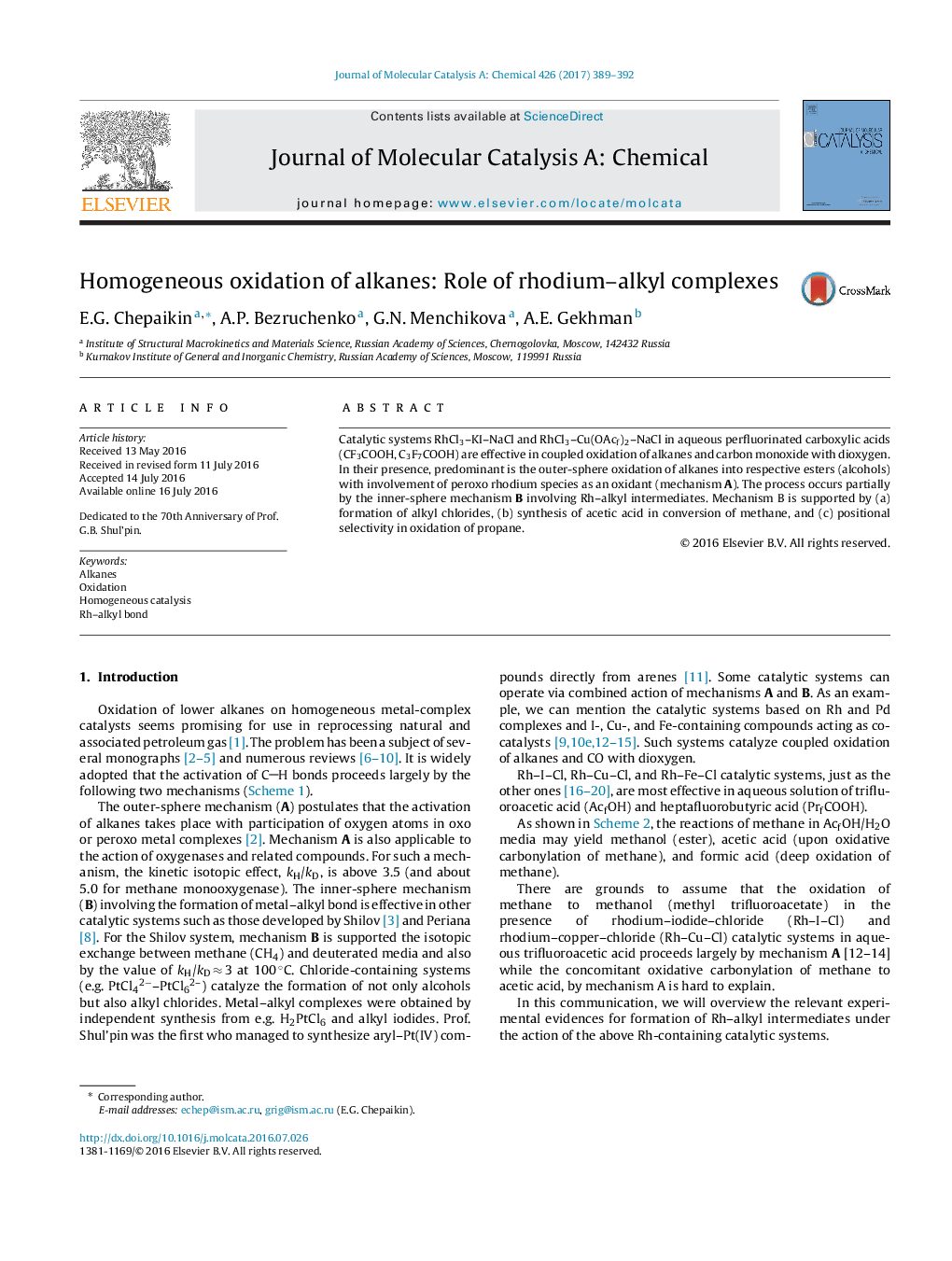| Article ID | Journal | Published Year | Pages | File Type |
|---|---|---|---|---|
| 6456430 | Journal of Molecular Catalysis A: Chemical | 2017 | 4 Pages |
â¢Induction period in oxidation of CH4 and C3H8.â¢Formation of CH3Cl, n-C3H7Cl, i-C3H7Cl, and C4H9Br.â¢Positional selectivity in oxidation of propane.â¢Formation of Rh-alkyl intermediates.â¢Synthesis of acetic acid from CH4, CO, and O2.
Catalytic systems RhCl3-KI-NaCl and RhCl3-Cu(OAcf)2-NaCl in aqueous perfluorinated carboxylic acids (CF3COOH, C3F7COOH) are effective in coupled oxidation of alkanes and carbon monoxide with dioxygen. In their presence, predominant is the outer-sphere oxidation of alkanes into respective esters (alcohols) with involvement of peroxo rhodium species as an oxidant (mechanism A). The process occurs partially by the inner-sphere mechanism B involving Rh-alkyl intermediates. Mechanism B is supported by (a) formation of alkyl chlorides, (b) synthesis of acetic acid in conversion of methane, and (c) positional selectivity in oxidation of propane.
Graphical abstractDownload high-res image (62KB)Download full-size image
